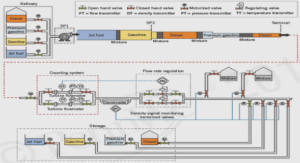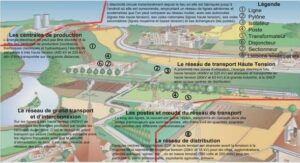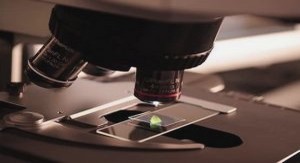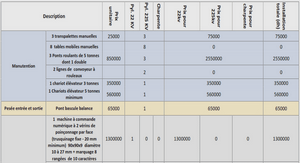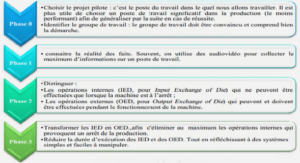Cours performance of the UF process during total recirculation and concentration modes, tutoriel & guide de travaux pratiques en pdf.
Relative proportion of bioactive peptides in hydrolysates and permeates
Several studies, which combined HHP and enzymatic hydrolysis to improve protein digestion, have demonstrated that pressurization improved the production of bioactive peptides, generally defined as low MW fragments of proteins [115], from many different food proteins. This increased generation of bioactive peptides in pressure-treated hydrolysates was mainly related to the impact of pressurization on protein structure since HHP induced protein unfolding and accelerated protein hydrolysis by exposing new cleavage sites for enzymes. Our study clearly demonstrates that pressurization of β-LG before trypsin hydrolysis improves bioactive peptide production, specifically at 400 MPa because this pressure was probably optimal for protein unfolding and enzyme activity. A recent study demonstrated that enzymatic digestion of β-LG (100 MPa for 2h) with different proteases under pressurization improved the antioxidant and anti-inflammatory activities of pressure-treated hydrolysates due to generation of low-molecular weight and hydrophobic peptides. However, the use of trypsin did not improve the degree of hydrolysis or hydrolysate bioactivities.
Characterization of peptide fouling on ultrafiltration membranes
The formation of a fouling layer induced by peptides at the membrane surface is mainly dependent on peptide MW, charge and hydrophobicity [91] ; [88]. The physicochemical parameters of the membrane material also had a significant impact on peptide adsorption [92]. In our study, UF membranes were successively submerged in HNO3 to desorb electrostatically-linked peptides and in SDoS to desorb hydrophobically-linked peptides [75] ; [108]. We demonstrated that peptide fouling occurred at the membrane surface in all conditions but in different proportions. Only the peptide ALPMHIR, an antihypertensive peptide also known as lactokinine [120], was detected in all tested conditions (0.1, 400 and 600 MPa) after desorption by SDoS, suggesting that hydrophobic interactions occurred between this hydrophobic peptide and the PES UF membrane. However, since ALPMHIR is positively charged at pH 8, electrostatic interaction with the negatively charged PES material might also occur but to a lesser degree. These results agreed with previous studies which reported a decrease in UF performance due to fouling by hydrophobic peptides. Indeed, Bouhallab and Henry [105] demonstrated that the transmission of hydrophobic peptide (f193-209) generated after chymosin hydrolysis of β-casein was drastically reduced during UF due to hydrophobic interaction with the membrane material [24]. Groleau et al. [121] showed that removing hydrophobic peptides from tryptic β-LG hydrolysate potentially reduced the fouling material and improved permeate flux during concentration by nanofiltration [121]. However, our observations contradict those of Fernàndez et al. [88] since these authors suggested that higher adsorption of hydrophobic peptides at the surface of a 1-kDa PES UF membrane after fractionation of tryptic β-LG may be involved in the higher peptide transmission observed [122]. Since the relative abundance of ALPMHIR desorbed from the UF membrane was similar for the 0.1, 400 and 600 MPa treatments, the decrease in UF performance observed at 400 MPa could not be explained only by the formation of a fouling layer induced by this hydrophobic peptide.
The peptides potentially linked by electrostatic interaction to the UF membrane material were higher in number and relative abundance after UF of the hydrolysate generated by pre-pressurization of β-LG at 400 MPa for 10 min, which may explain the loss of efficiency during filtration of hydrolysate in total recirculation and concentration modes. From these peptides, two originating from BSA hydrolysis were probably also involved in the formation of the fouling layer. Since PES was demonstrated as negatively charged, electrostatic interaction may have occurred between the PES material and the positively charged peptides LIVTQTMK (peak #5) and YANKY (peak #7), at the working pH (pH 8). However, the remaining peptides (peaks #4, 9, 13 and 17 (QEPER)) were negatively charged at pH 8 and could not directly interact with membrane material. This tendency was described by Fernàndez et al. [88], who determined that transmission of negatively charged peptides originating from a β-LG tryptic hydrolysate was drastically reduced after their fractionation by UF on a 5-kDa PES membrane, due to the electrostatic repulsion phenomenon [88]. Nevertheless, the lack of agreement of our results with the accepted theory could be explained by a size/charge mechanism. Indeed, the recovery of peptides VAGTWY (peak #9), AEFVEVTK (peak # 13) and QEPER (peak #17), all with a MW less than 1 kDa, suggested that size rather than charge was the predominant factor affecting their transmission. This hypothesis agrees with a previous study which demonstrated high transmission of the negatively charged peptide ALK (139-141) through a negatively charged 5 kDa PES membrane [88]. This is confirmed by the higher relative abundance of these three peptides in permeates, specifically for the 400 MPa condition (Figure 19). The same explanation could apply to peptides TPEVDDEALEK (peak #4) and VAGTWYSLAMAASDISLLDAQSAPLRVY (peak #20), even if their molecular weights were higher than 1 kDa, due to their recovery in permeates and because pore size distribution is expressed in terms of Gaussian normal distributions.
